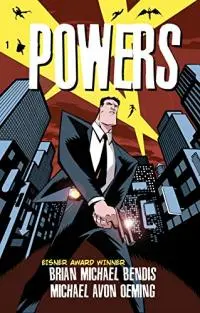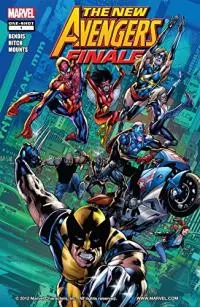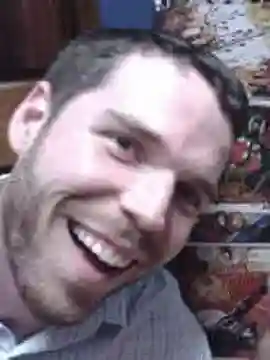Brian Michael Bendis has been writing for Marvel Comics for nearly two decades, but that all ends in May. His very last Marvel comic will be Invincible Iron Man #600, released on May 23, and after that he becomes exclusive with DC Comics, the “distinguished competition” as they’ve been known for years. The friendly rivalry between the two companies has stayed mostly that since Marvel made its big splash in the 1960s, but it’s hard to deny this is a big win for the home of Superman, Batman and Wonder Woman. And Bendis will be going straight to the head of the table, writing a backup story for April’s Action Comics #1000, following that up with a six-issue Man of Steel mini-series, and then tackling both the Action Comics and Superman ongoing series.
With this massive paradigm shift about to occur, both for the writer and the industry he works within, this is a good opportunity to look back on the biggest stamp he left on Marvel. Some might argue it was his run on Ultimate Spider-Man that evolved into Miles Morales: Spider-Man, while others could say it was his acclaimed Daredevil stint that saw the titular character outed to the public. But the pond within which Bendis will leave the most ripples is the Avengers, and specifically the near decade he spent on The New Avengers, collected into seven omnibus volumes that were released last year. Re-reading these volumes, the big takeaway is the care and repair Bendis applied to Luke Cage as a character.
Bendis broke into comics with his indie noir work on the likes of Fire, AKA Goldfish and Jinx at Caliber Comics before moving over to Image in 1996. There he took over the Spawn spinoff Sam and Twitch, and in 1998 debuted Powers, a landmark comic about police dealing with superhero-related cases. What all of these, and his other early work, had in common was a noir bent and a particular aesthetic that reflected his first black-and-white works. In 2000, however, he was hired by then Marvel Comics President Bill Jemas to launch the new Ultimate line of books with Ultimate Spider-Man. This comic, and the line in general, targeted a new generation by starting the company’s famous characters from scratch. A year later he took over for Daredevil, ultimately writing 55 issues over the next five years, and also helped launch Marvel’s non-Comics Code-approved adult MAX imprint with Alias (November 2001-January 2004), featuring former superhero Jessica Jones operating as a private investigator. And his approach with this material came to be known as “decompression,” with storylines strung out across several issues. There was no greater example of this than his initial arc on Ultimate Spider-Man that expanded the 11-page origin story from 1962’s Amazing Fantasy #15 to seven issues.
 All of this was fairly consistent, with Bendis writing “street level” stories that tended to avoid the fantastical, instead focusing on a more grounded world of reporters, lawyers and detectives. The changed, however, in 2004 when he took over The Avengers.
All of this was fairly consistent, with Bendis writing “street level” stories that tended to avoid the fantastical, instead focusing on a more grounded world of reporters, lawyers and detectives. The changed, however, in 2004 when he took over The Avengers.
Bendis took over the Avengers with the “Avengers Disassembled” storyline, with issues #500-503 and the Avengers Finale epilogue, released between August 2004 and January 2005, tearing the team apart at the hands of former ally the Scarlet Witch. She loses her mind and in the chaos kills Scott Lang’s Ant-Man, the Vision, and Hawkeye while also traumatizing She-Hulk, severely wounding the Wasp and causing Tony Stark to lose his then-position as Secretary of Defense. In the aftermath Tony’s business suffers and, lacking the money to rebuild the mansion or fund the Avengers, the team disbands.
This, of course, segued into Bendis’s The New Avengers. Dated January 2005 but appearing in November 2004, its name was a riff on Grant Morrison’s reimagining of the X-Men with New X-Men in 2001, and was a purposeful reconceptualization. It follows a broad outline mimicking the original Avengers origin, in that individual heroes come together on a “fateful day” and find they’re stronger together than apart. Captain America, Iron Man, Luke Cage, Spider-Man, Spider-Woman, and the Sentry all find themselves at the maximum-security facility known as the Raft during a massive breakout. This establishes the conflict of the early issues, of the team banding together to catch all the fugitives, but also a macro-story of who hired the supervillain Electro to spring all the criminals. Turns out it was the alien shapeshifters known as the Skrulls, and that all comes to a head in the crossover event Secret Invasion in 2008.
Early on it’s made fairly clear that this isn’t your father’s Avengers, and it’s highlighted by an early conversation between Iron Man and Captain America about Wolverine. Much like Captain America wasn’t a founding member, only having joined in Avengers #4 after the Hulk left, Wolverine isn’t part of the battle at the Raft. He shows up a few issues later when the New Avengers find themselves in the Savage Land. Iron Man argues that Wolverine is the final piece of whatever puzzle fate is piecing together. Captain America, however, clearly has a probably with the X-Man, arguing that Wolverine is a murderer. But Tony, ever the futurist, says that Wolverine is a sign of changing times, and will be able to do the things they’re never capable of doing. This is a fascinating idea, but for whatever reason Bendis doesn’t address it much throughout the rest of his run. There’s a brief bit in issue #15 when the New Avengers schedule a press conference to reveal themselves to the public and Wolverine refuses to go on stage because it’ll make the group look bad, but that’s about it.
No, the character that Bendis obviously gravitates towards, and who represents the true mission statement of this magnum opus, is Luke Cage. Bendis had already been building up Luke in the years leading up to New Avengers, first as a problematic love interest for Jessica Jones in the Alias series, then as a bodyguard for Matt Murdock in Daredevil, and finally as a devoted boyfriend to a pregnant Jessica in The Pulse (April 2004-May 2006), the semi-sequel to Alias that followed Jessica working for the Daily Bugle newspaper as a consultant. In issue #3 of New Avengers when Captain America comes to Luke’s home to recruit him, Luke says upfront that he’ll only join if they make changes. This pays off in issue #17 when the New Avengers touch down in Highland Park, Detroit, to do “impact superhero work,” their mere presence acting as a deterrent to crime.
The first few story arcs of New Avengers are clearly Bendis trying to find his footing, and a big part of that is while he gives Luke Cage a unique voice from the start, he doesn’t quite have a handle on Captain America or Iron Man. These classic members of the Avengers are a bit too stiff and fantastical for Bendis’s liking and Captain America suffers for this, coming across as more of a living, breathing propaganda poster at first and then, during Civil War, a pissed-off drill sergeant. Iron Man fares a bit better, although in the pre-Robert Downey Jr. days Bendis doubled down on Tony’s struggles with addiction and his intellect. It’s not until the Illuminati comes into play that Tony begins to develop a bit more of a personality based around how that intellect can be the thing that tortures him.
 New Avengers really figures itself out with issue #27, the start of the first major story arc post-Civil War, and a new status quo for the team that sees Luke unofficially become the leader. Now fugitives and working underground, the Avengers move into new member Doctor Strange’s Sanctum Sanctorum as their headquarters. Other new members include a resurrected and disgruntled Clint Barton, taking over the identity of Ronin from Maya Lopez’s Echo, along with Iron Fist. This idea of them being persecuted and having to work under the radar takes Luke’s rebellious attitude from the first few arcs and umbrellas it out across the whole team.
New Avengers really figures itself out with issue #27, the start of the first major story arc post-Civil War, and a new status quo for the team that sees Luke unofficially become the leader. Now fugitives and working underground, the Avengers move into new member Doctor Strange’s Sanctum Sanctorum as their headquarters. Other new members include a resurrected and disgruntled Clint Barton, taking over the identity of Ronin from Maya Lopez’s Echo, along with Iron Fist. This idea of them being persecuted and having to work under the radar takes Luke’s rebellious attitude from the first few arcs and umbrellas it out across the whole team.
Now they’ve all got chips on their shoulders, and this continues across the next few iterations of the first volume. Tony Stark as the head of SHIELD gets replaced by Norman Osborn as the head of HAMMER, and the Fifty State Initiative is taken over by the Hood and his gang, and it’s all met by Luke’s righteous anger. As the team moves into a Danny Rand-owned penthouse and then into Bucky Captain America’s safehouse, eventually the official team leadership is handed over to Clint Barton, but that same renegade anger continues. Luke’s attitude is the team’s attitude, and the framing is based around trying to still do right even when the world tests you and tries to force a compromise.
The first series ended with issue #64, followed by a The New Avengers: Finale one-shot, in April of 2010, and picked up again with a second series with Luke, and now Jessica Jones as a full member going by Power Woman, maintaining the beating heart of the team. Post-Siege the Superhero Registration Act has been abolished and the New Avengers move back into Avengers Mansion. The general tone of this volume is a bit lighter, as reflected by how Luke and Jessica have settled into domesticity to raise their daughter Danielle. Several issues feature the team, now including Ms. Marvel and Mockingbird who joined toward the end of the previous volume, and the Thing from the Fantastic Four gathered around a dinner table eating extravagant meals.
This is particularly evocative of the opening moments of “Avengers Disassembled” that see Clint Barton, as Hawkeye, eating lunch with Janet Van Dyne and She-Hulk while being served by Jarvis the Butler. There’s a bourgeoisie, idle-rich reactionary aspect to Bendis’s first issue that is in stark contrast to his first New Avengers volume being so aggressive and proactive. By this second volume, however, it’s come back around to the team being a more classic iteration, just with unorthodox membership. There’s even hired help, except this time instead of Jarvis there’s Squirrel Girl as a nanny for Danielle, allowing Jessica to be a superhero full-time.
But although this volume is still entertaining, it’s hard to deny it lacks the scrappy energy of the first volume. Luke and Jessica, whose relationship was the core drama that played out across a decade of Bendis’s storytelling while the other members of the team had their own stories play out in solo series, found themselves mellowing out and becoming more responsible with age. As much as any comic book characters can have natural endings, Jessica’s comes in issue #24 when she quits the New Avengers to keep Danielle out of danger, and Luke’s comes when he quits in the last issue, #34 in November 2012.
Of course, these characters have continued on, and have even been written by Bendis since 2012. The majority of his New Avengers characters appeared in his 10-issue Age of Ultron event series in 2013, Jessica got her own solo series again in 2016 written by Bendis, and 2017 saw the writer tackle The Defenders, a series based on the Netflix characters that were roundaboutly inspired by his work, including the New Avengers. But for the most part his more recent work, with the X-Men, Guardians of the Galaxy and Iron Man, has been much more traditionally superheroic than his early work.
But as he departs for DC Comics in the months ahead, it’s clear that none of his oeuvre more reflects his evolution as a writer than New Avengers. It saw him progress from a crime and noir focus to the outlandish, and from world-weary street toughs like Luke Cage to globe-trotting playboys like Tony Stark in The Invincible Iron Man. Who knows if he’s capable of capturing the voice of a boy scout like Superman, but if he pulls it off it’ll be thanks to having written characters, like Captain America, that were outside his comfort zone in the New Avengers.

About the author
A professor once told Bart Bishop that all literature is about "sex, death and religion," tainting his mind forever. A Master's in English later, he teaches college writing and tells his students the same thing, constantly, much to their chagrin. He’s also edited two published novels and loves overthinking movies, books, the theater and fiction in all forms at such varied spots as CHUD, Bleeding Cool, CityBeat and Cincinnati Magazine. He lives in Cincinnati, Ohio with his wife and daughter.







